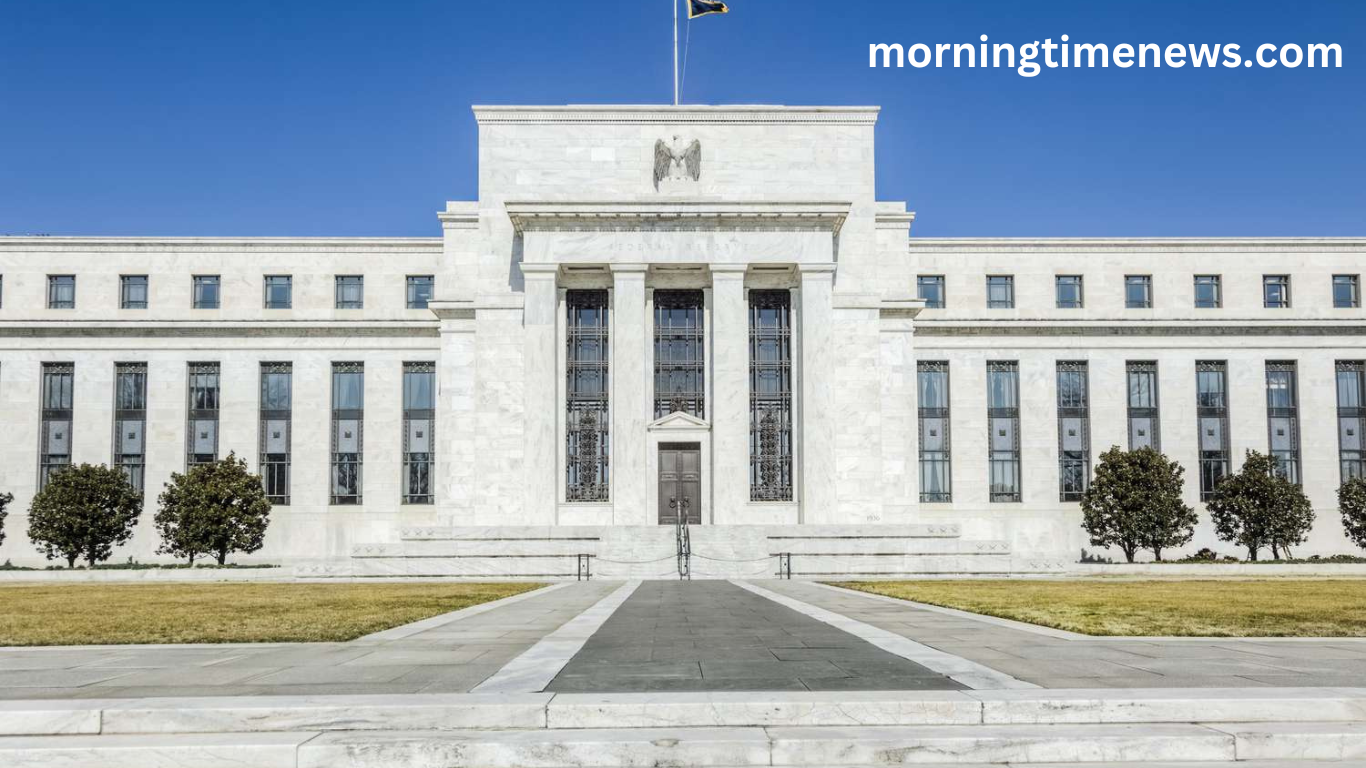The Central Bank has revised its economic growth forecasts for 2025 and 2026 due to the increasing threat of US tariffs. In its latest quarterly bulletin, the regulator identified US policy uncertainty as the leading risk to the Irish economy. The potential for a full-scale trade war raises concerns about further downward revisions.
Weaker Growth Projections
The bank now expects Ireland’s economy to grow by 2.7 percent in 2025, down from its previous forecast of 3.2 percent. For 2026, the projection has been lowered to 2.5 percent from 2.7 percent. These adjustments reflect the growing uncertainty surrounding US trade policy and the potential economic fallout.
Risk of Further Downgrades
The economic outlook faces significant downside risks, particularly given the scale of US President Donald Trump’s proposed tariff plans. Trump has threatened a blanket 25 percent tariff on all EU exports to the US. The Central Bank warns that such measures, along with potential retaliatory actions from the EU, could further weaken Ireland’s growth prospects.
Ireland’s Exposure to US Trade Policy
As a small, open economy with strong trade and foreign direct investment (FDI) ties to the US, Ireland remains highly vulnerable to shifts in US economic policy. The Central Bank highlights that tariffs and non-tariff barriers could impact multinational enterprises (MNEs) operating in Ireland by altering the profitability of their Irish operations.
Read More : Amazon Sues CPSC Over Recall Order for Hazardous Goods
Broader tax and industrial policy changes in the US could further discourage investment in Ireland, compounding the effects of trade-related barriers. Multinationals may reassess their presence in Ireland if these changes reduce the appeal of maintaining operations within the country.
Surge in Irish Exports to the US
Recent trade data points to a sharp increase in Irish exports to the US. In January, exports surged by 81 percent to a record €11.7 billion, raising speculation that multinationals are stockpiling goods in anticipation of potential tariffs. This preemptive action underscores the uncertainty surrounding future trade relations.
Labour Market Resilience and Household Income Growth
Despite external risks, the Central Bank projects continued real income growth for Irish households. Employment expansion is expected to support income levels, while inflation is forecast to remain below 2 percent on average.
Unemployment has stayed below 5 percent for the most extended period in the State’s history, reflecting ongoing labor market strength. Inflation is expected to rise to 2.2 percent in 2025 before easing to 2.1 percent in 2026 and further declining to 1.4 percent by 2027.
Housing Investment and Supply Challenges
While housing completions are set to increase, overall investment in the sector is projected to remain below required levels due to population growth and household formation trends. Completions are forecast to reach 35,000 in 2025, 40,000 in 2026, and 44,000 in 2027.
However, the projections for 2025 and 2026 have been revised downward by approximately 3,000 units due to slower momentum in 2024. Several structural issues continue to constrain housing supply, including low construction sector productivity, delays in utility connections, inefficiencies in the planning system, and a shortage of zoned and serviced land in high-demand areas.
Frequently Asked Questions
Why has the Central Bank lowered its economic growth forecasts for 2025 and 2026?
The Central Bank has revised its growth forecasts due to rising concerns over US tariffs and the potential for an all-out trade war. The uncertainty surrounding US economic policy is impacting investment, exports, and consumption, leading to a more cautious outlook.
How much has the growth forecast changed?
The bank now expects the Irish economy to grow by 2.7 percent in 2025, down from the previous projection of 3.2 percent. For 2026, the forecast has been lowered to 2.5 percent from 2.7 percent.
What is the biggest risk to the Irish economy?
US policy uncertainty, particularly the threat of a 25 percent tariff on all EU exports, poses the most significant risk. Retaliatory measures from the EU could further disrupt trade and economic stability.
How could US tariffs impact multinational companies in Ireland?
Tariffs and non-tariff barriers could make it less profitable for multinational enterprises (MNEs) to operate in Ireland. If combined with tax or industrial policy changes in the US, these measures could reduce investment and economic activity in Ireland.
Has the trade uncertainty already affected Irish exports?
Yes, Irish exports to the US surged by 81 percent in January, reaching €11.7 billion. This spike suggests that multinationals may be stockpiling goods in the US ahead of potential tariffs.
How is the labour market performing despite these risks?
The Irish labour market remains strong, with unemployment staying below 5 percent for the longest period in the country’s history. Household incomes are also expected to continue growing, supported by employment expansion.
What are the inflation projections for the coming years?
Inflation is forecast to rise to 2.2 percent in 2025 before slightly easing to 2.1 percent in 2026 and further declining to 1.4 percent by 2027.
What challenges does the housing market face?
Despite a projected increase in housing completions, supply remains constrained by low productivity in construction, planning delays, utility connection issues, and a shortage of zoned and serviced land. Completions are forecast at 35,000 in 2025, 40,000 in 2026, and 44,000 in 2027, but these figures have been revised downward due to slower momentum in 2024.
Conclusion
The Central Bank’s revised growth forecasts highlight the increasing risks posed by US trade policies, particularly the threat of tariffs. While Ireland’s economy remains resilient, external uncertainties are weighing on investment, exports, and housing supply. The strong labour market and rising household incomes provide stability, but further policy shifts could lead to additional downgrades. Ongoing vigilance is needed to navigate potential economic disruptions and safeguard long-term growth prospects.

